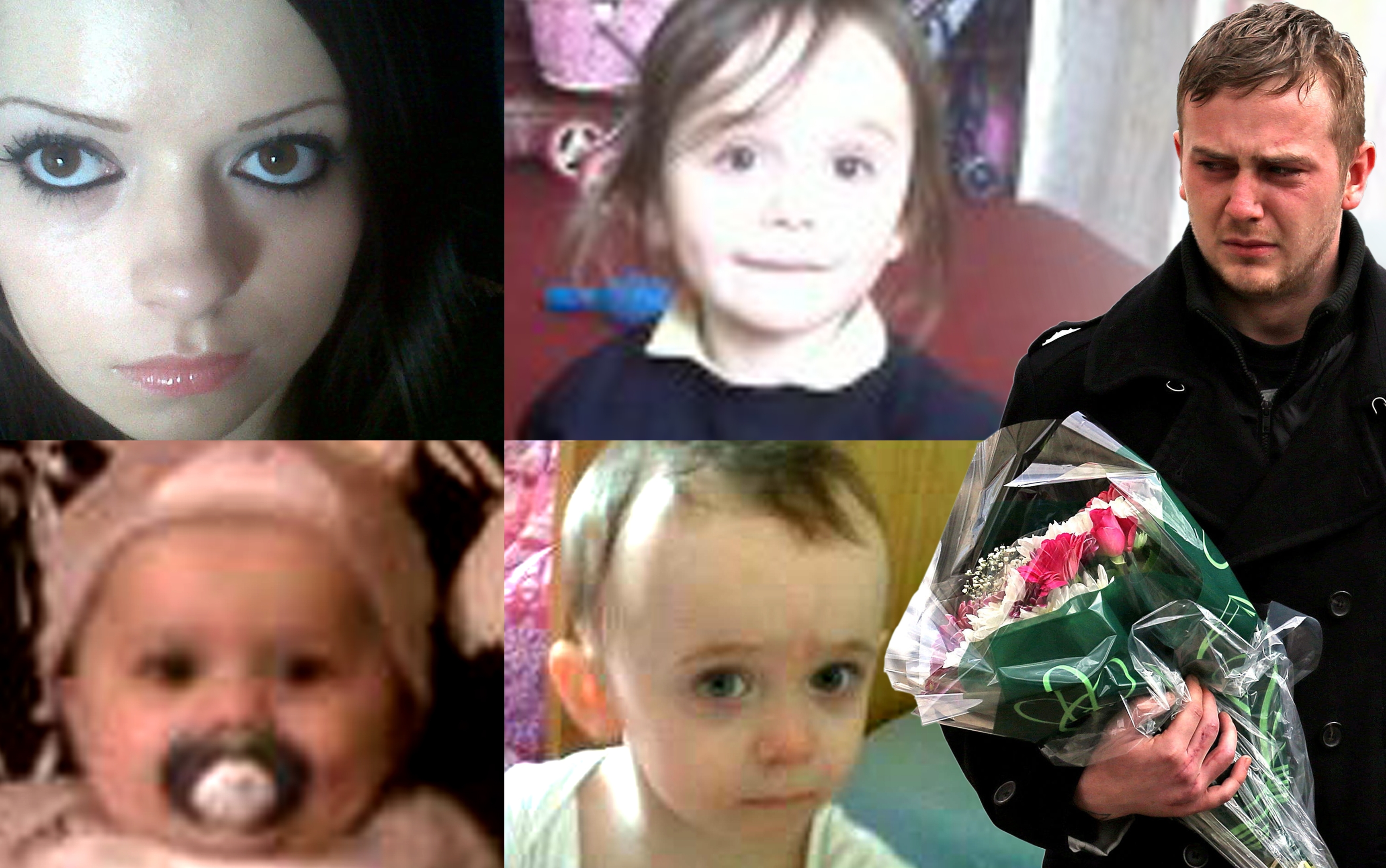An inquest has heard that a distressed mother drowned her three children in the bath, kissed them goodbye and tucked them up in bed before taking her own life.
23-year-old Fiona Anderson, who was a former pupil at Kingussie High School near Aviemore, was eight months pregnant with her fourth child when she died on April 15 last year after jumping from a car park in Lowestoft, Suffolk
Police later discovered the bodies of Levina, three, Addy, two, and 11-month-old Kyden, in their mother’s double bed at their home in the town’s London Road South, an inquest in Bury St Edmunds heard today.
Miss Anderson, who feared her children would be taken into care, had scrawled several messages on the walls of the house, including: “I’ve put them in bed, the last words they heard were I love you.”
The inquest heard that a Suffolk Local Safeguarding Children Board serious case review found that the repeated refusal by Miss Anderson and the children’s father, Craig McClelland, to co-operate with social workers had made it difficult to take any effective action.
The report’s author said attempts to intervene had been allowed to “drift”, a student social worker had “inappropriately” been assigned to the case and the relationship between the couple and social workers had become “adversarial”.
Although there were concerns over neglect, neither parent had been known to harm the children.
Officers who called at the house found evidence the children had been drowned in the bath. There was no sign they had been restrained or assaulted, a post-mortem examination found.
Other messages, written on the wall in green marker pen, read: “I put them to bed with their bear bears – they loved their bears.”
Another read: “I love them and I’m going to keep them safe.”
A final message said: “They’re cuddled up together sleeping. They look so peaceful.”
Each of the children had a heart drawn on their torso in green ink to create the message “I love you x”, Detective Chief Inspector Andy Smith said.
Police also found evidence of a lipstick kiss mark on each of their foreheads.
Miss Anderson had written the names of each child on her body, along with the name “Eve”.
She had intended to name her unborn daughter Everly Rihanna, the inquest heard.
Mr Smith said that the day before the killings, she had argued with Mr McClelland, after he began a new relationship.
She stabbed him during this confrontation but he initially lied to police and said he had been stabbed in the street by a stranger.
She sent him a text message reading: “Say goodnight to your children – it’s the last time you will see them.” Mr McClelland did not receive this because he was in hospital.
Mr Smith said: “He later told us he lied to protect Fiona and stop the children being taken into care.
“It is clear that Fiona Anderson loved her children but that she was extremely emotionally disturbed on April 13, 14 and 15.”
He added a torn-up letter recovered after her death provided “a harrowing insight into her life”.
“She felt unable to cope with the situation and apologetically outlined her intention to take her children with her,” Mr Smith said.
“In her words: a mother never abandons her children.”
The family had been known to care agencies since she first became pregnant in 2009, the inquest was told.
Child protection plans were in place because of possible physical and emotional neglect but there had also been no fresh action taken in 2013 which might have triggered her response.
Serious case review author Ron Lock said the family had been considered “hard to reach” since Miss Anderson’s “unwavering and determined” refusal to engage with children’s services since her first pregnancy.
Mr Lock said: “If the children had been placed into care this could have avoided this tragic outcome.
“But there is never any guarantee that the application for a care order would be successful or that the children would remain in care.”
Because there was no previous evidence of the children being physically harmed or the parents self harming, the deaths were not foreseeable, he concluded.
Bob Cook, chairman of the safeguarding panel, said: “It was so far off the radar that I don’t think it could have been predicted by any reasonable person.”
Miss Anderson’s mother, Kerry Anderson, and Mr McClelland both attended the inquest which is expected to conclude tomorrow.
